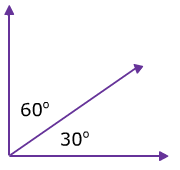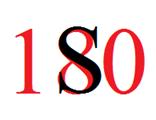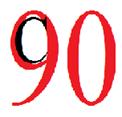Supplementary and Complementary Angles
Here is a look at two of the relationships.
Supplementary angles are two angles that have a sum of 180°.

Complementary angles are two angles that have a sum of 90°.

There is an easy way to try and remember these using the first letters of each word.
The S in supplementary can be used to form the 8 in 180.

The C in complementary can be used to form the 9 in 90.

If we know that a set of angles form one of these special relationships, we can determine the measure of the other angle.
Example #1: 43°
To determine the supplement, subtract the given angle from 180.
180 - 43 = 137° The supplement of 43° is 137°.
To determine the complement, subtract the given angle from 90.
90 - 43 = 47° The complement of 43° is 47°.
Example #2: 61°
180 - 61 = 119° The supplement of 61° is 119°.
90 - 61 = 29° The complement of 61° is 29°.
Example #3: 127°
180 - 127 = 53° The supplement of 127° is 53°.
127° is already greater than 90°. Therefore, there is no complement.
Example #4: Determine the missing angle.

Notice that the two angles for a right angle when together. This means that the angles are complementary and have a sum of 90°.
90 - 62 = 28°
The missing angle measures 28 degrees.
Example #5: Determine the missing angle.

These two angles form a straight line. Straight lines measure 180°. That means that these two angles are supplementary.
180 - 77 = 103°
The missing angle measures 103 degrees.
Let's Review
Complementary angles form a right angle (L shape) and have a sum of 90 degrees.
Supplementary angles form a straight line and have a sum of 180 degrees.
If the relationship is given, you can subtract the given angle from the sum to determine the measure of the missing angle.
|
Related Links: Complementary and Supplementary Angle Worksheets Math Geometry Angles |
